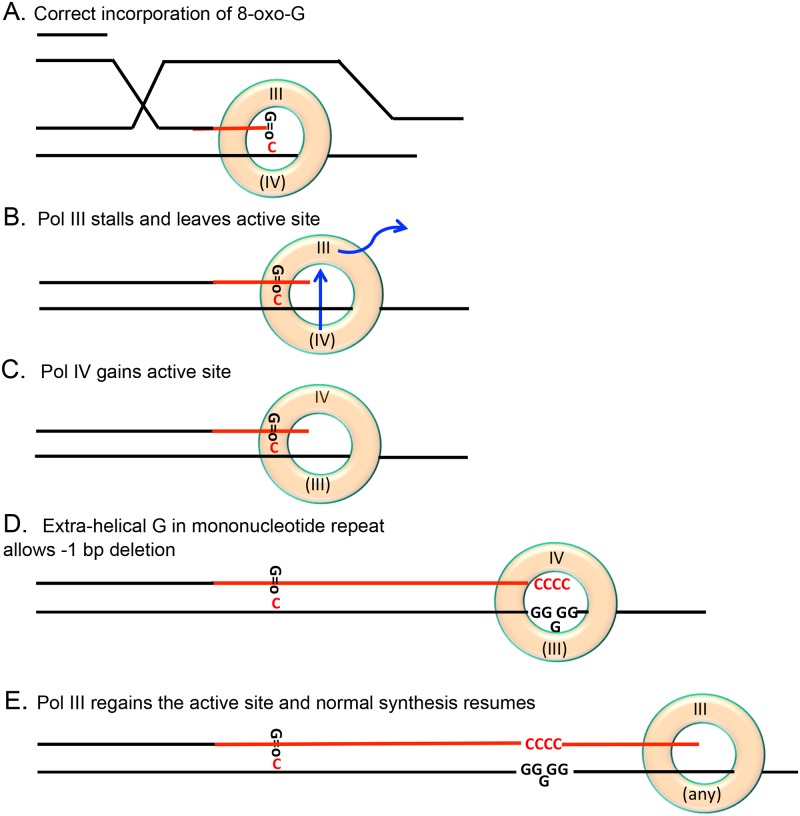Fig 7. Model: Replisome pausing at damaged bases allows DNA polymerase switching and MBR: Example of oxidized bases allowing Pol IV-dependent indels at non-damaged sites downstream.
This example illustrates a general model in which the switch from the processive, high-fidelity DNA Pol III used in DSB repair [20] to any of the alternative mutagenic DNA polymerases results from Pol III pausing at a damaged base, either in the template or newly added to the 3’-primer end. One way that 8-oxo-dG could allow Pol IV-mediated MBR mutations (at other DNA bases) is shown here. (A) A D-loop made during DSB-repair of a one-ended DSB has invaded a sister DNA molecule (parallel lines, base-paired DNA) and primed new synthesis (red line) using Pol III. Pol III inserts 8-oxo-dG, here opposite a template C [38], or could stop after inserting C at 8-oxo-dG in the template (not illustrated). (B) Pol III pauses because it extends poorly from an 8-oxo-dG primer end paired with template C [38]. We suggest that the pausing allows Pol III to leave the active position on the β-clamp, and an alternative DNA polymerase on the β-clamp (Pol IV/DinB shown here) to move into the β-clamp active position. (C) Pol IV in the active position extends synthesis from the 8-oxo-dG primer opposite template C (or, not illustrated, bypasses an 8-oxo-dG in the template strand, inserting the correct base or an incorrect base), and continues synthesis making indel (and/or base substitution) errors at mononucleotide repeat sequences, at which it is most error-prone. (D) Eventually Pol IV pauses because of its limited processivity [39], allowing Pol III to resume. Black lines represent pre-existing nucleotide chains and red lines represent new synthesis. The β-clamp is represented as an orange doughnut. The β-clamp site with the active DNA polymerase is illustrated at the top of the β-clamp, and the inactive DNA Pol binding site at the bottom in parenthesis. Blue arrows in (B) indicate movements of polymerases on and off the β-clamp. G = o indicates 8-oxo-dG.

